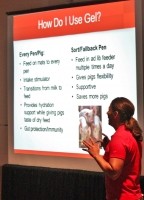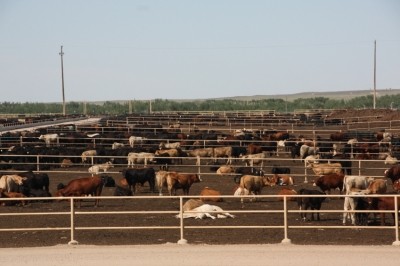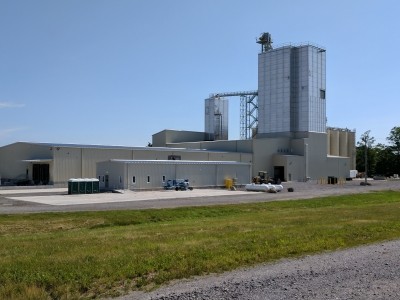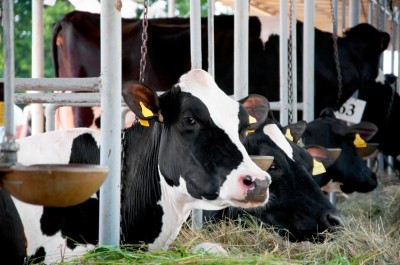Probiotics aid piglets during times of stress but more research needed: Purina
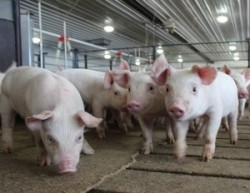
Rebecca Bierlein, young animal specialist at Purina Animal Nutrition, said she believes there will only be more "solid research" conducted on the benefits of using probiotics in pig production when US producers decide to quicken the pace in the hunt for effective alternatives to antimicrobial growth promoters (AGPs).
Sow supplementation
A key area of focus for researchers “might be how the supplementation of the diets of sows impacts the health and overall performance of piglets in gestation and lactation,” she told feednavigator as Purina released data from its presentations on how to minimize piglet stress during weaning at the World Pork Expo this summer.
Creep feed prior to weaning and the first feed post-weaning should include a complex combination of nutrients including a variety of amino acids and nutraceuticals along with probiotics to stimulate the gut of the piglet and strengthen its immunity, said the Purina pig specialists.
Bierlein said Purina Animal Nutrition does use probiotics “that are exclusive to the company” in its UltraCare starter lines.
“We continue to strive for excellence by researching and trialing new and innovative products that provide the greatest return on investment for our producers. Weaning is a critical stage for the young pig and I do believe these products [probiotics] are most beneficial during times of stress and gut acclimation,” she continued.
But Bierlein, who routinely visits swine operations serving as a consultant on pig nutrition and management, said there remains significant variation in probiotic products, strains, and dosage levels as well as question marks over the stability of some strains in feed.
Moreover, she said, trials on the impact of probiotics on the gut microbiota of pigs are not providing consistent results so more studies are needed to determine whether it is environmental, stress load, health status, or nutritional deficiency factors that are contributing to this variance.
Return on investment
“One of the clear limitations for the pig sector in terms of using pre and probiotics in feed is their current price,” Bent Borg Jensen, senior researcher in the Department of Animal Science at Denmark’s Aarhus University, told this publication earlier this month.
He said the microorganisms have not tended to be used at high dosage levels in pig trials due to the high costs that would be incurred as a result.
“And we have found the beneficial effect from the use of such microorganisms in pig diets is only really seen when they are used daily and in large quantities due the composition of that species’ gut microflora along with the fibrous nature of a pig’s diet,” said Jensen.
Hence, perhaps, the variance in outcomes seen in trials, he noted.
“But pre and probiotics might be more cost effective when used in weaning diets, due to the much lower quantities of feed required at that life stage,” said the researcher.
Post-weaning toolbox
Purina pig experts, in their World Pork Expo seminar, stressed the importance of the producer’s ‘toolbox’ to reduce weaning challenges for their piglets, saying along with quality hydration and nutrition inputs for young pigs, employee awareness and a healthy environment in terms of temperature, air quality and humidity levels were crucial.
They say pig producers should educate their teams on the industry and the importance of their actions, outlining a nursery care process that clearly outlines day-in and out responsibilities, emphasizes why actions are important, and verifies completion of tasks.
Piglet housing conditions
“The environment for the weaned pig should be comfortable to keep stress low,” said Dan McManus, swine specialist for Purina Animal Nutrition. “Evaluate and adjust temperature, ventilation and humidity routinely.”
Young pigs should be started at about 82 degrees F (28 degrees C) “Transition temperature down to roughly 65 degrees F over a seven week period,” he continued.
Air quality is also critical, said McManus. “Maintain ventilation to keep air fresh. Well-functioning ventilators help remove undesirable compounds, including ammonia, dust and pathogens.”
And relative humidity, he added, should be maintained between 50 and 60% to prevent bacterial and viral growth.
Piglet hydration
Attentive management is critically important post-weaning due to the young age of the piglets, said Bierlein.
Industry research, said Purina, has shown that only 51% of pigs consume water 25 hours post-weaning due to unfamiliarity with surroundings and the stress of movement. The company said providing gels and electrolytes at weaning can help improve hydration levels.
“When I work with producers to create a constructive care plan for the nursery, our first priority is to get the pigs drinking,” said Bierlein, explaining that mortality rates are more prevalent if a pig loses 15% of its water weight.
Providing gels and electrolytes at weaning can help improve hydration levels, she added.
Bierlein also recommends providing electrolytes to pigs in times of stress: “Electrolytes work to keep hydration levels up and minimize that stress at weaning by providing necessary nutrients (sodium, chloride, potassium, calcium and magnesium) to the pig.”
Challenged piglets
The Purina pig specialists say nursery nutrition and management is even more critical for challenged pigs – those impacted by illnesses, early weaning and transport.
“For challenged pigs, the basics are very similar to normal pigs; only, if we make mistakes, they’re magnified,” said McManus. He added that producers should have a toolbox in place that accounts for both normal post-weaning piglets and challenged ones.
